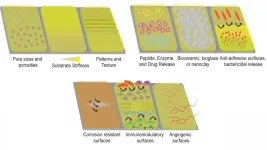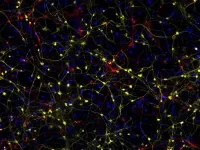The study will be published April 27 in the Journal of the American Medical Association.
Several coordinated initiatives to reduce C-sections took place across the state during the 2015-19 study period, including messaging to all hospitals from state agencies and health plans, annual public reporting of hospitals' C-section rates, and a quality improvement program targeting hospitals with the highest rates.
The study examined the collective effect of these projects, which have led California to become the first state in the country to achieve a sustained reduction in C-section rates.
In 2014, before the study began, 26% of first-time California mothers with low-risk pregnancies underwent C-sections, a rate equal to the current national average. By 2019, the statewide effort had lowered California's C-section rate to 22.8%, bringing it below a public health target of 23.9% set by the Centers for Disease Control and Prevention in its Healthy People 2020 goals.
"It's a big change from the U.S. average, and our collective efforts have not only significantly lowered the average rate for the state but also narrowed the variation between hospitals in California," said Elliott Main, MD, clinical professor of obstetrics and gynecology at Stanford Medicine. "This is great news for California women, especially because we have preserved and even improved on babies' outcomes at the same time."
Although C-sections can be lifesaving for babies and mothers in appropriate circumstances, they also carry risks. As a major surgery, a C-section entails more potential complications and a longer recovery period than vaginal delivery. Uterine scars from a prior C-section can also endanger future pregnancies, raising the risk of placenta accreta, in which the placenta implants too deeply into the uterine wall.
Before 2016, C-section rates varied widely between hospitals, with no medical reason for the variation, said Main, who is the study's senior author.
"We had pregnant women going to different hospitals in California and, through one door, the cesarean delivery rate was 15%, while through another it was 60%. That wasn't right," Main said.
Several factors unrelated to patients' medical needs, including hospital policies, the culture of the labor and delivery unit, and the attitudes and beliefs of individual doctors and nurses have all been shown to influence C-section rates, he added.
"Getting health care providers to change their behaviors is difficult, but this was a concerted effort with many layers of support for our hospital teams," said the study's lead author, Melissa Rosenstein, MD, the associate director for implementation science at the California Maternal Quality Care Collaborative and an assistant professor of obstetrics, gynecology and reproductive sciences at the University of California, San Francisco. "After we shared multiple strategies and provided every hospital with an analysis of its own data, each hospital chose the approach, or approaches, it wanted to work on."
Helping hospitals reduce rates
The research focused on C-section rates for first-time mothers with low-risk deliveries, known as NTSV, or nulliparous term singleton vertex births. This means the mother was having her first child, the pregnancy was at or near its due date, the baby was not a twin or other multiple, and the baby was positioned head-down before delivery.
Throughout the study period, annual C-section rates for NTSV births at all 238 hospitals in California were released to the public. Each year, hospitals that achieved the C-section rates of 23.9% or lower received recognition from the California Health and Human Services Agency. Some health plans also began providing their hospitals with incentives to lower their C-section rates.
Hospitals with C-section rates above 23.9% were invited to participate in an intense, 18-month, quality-improvement initiative aimed at lowering their rates; of 149 hospitals with rates higher than 23.9%, 91 participated. This initiative was led by the California Maternal Quality Care Collaborative, a statewide project to improve maternity care with headquarters at Stanford University.
Teams from the 91 participating hospitals met monthly with peer mentors to discuss strategies for change, such as educating doctors and nurses about the value of lowering C-section rates, giving labor nurses a more active role in encouraging and supporting vaginal delivery, and following national guidelines for identifying when labor is considered stalled. Many hospitals also encouraged women to move around more during labor, which can speed the process.
The collaborative provided hospitals with data about how their C-section rates compared with those of other institutions. Hospital leaders completed surveys to help identify the factors most responsible for each institution's C-section rate, as well as the best opportunities for lowering it. About 85% of the hospitals in the state also provided physicians with their individual C-section rates, allowing them to compare their own rates with those of their peers.
Among hospitals that started with C-section rates higher than 23.9%, those that participated in the collaborative's quality improvement project saw their NTSV C-section rates drop from 28.6% in 2015 to 24.2% in 2019. Hospitals that began with rates below the Healthy People 2020 target had C-section rates that remained about the same through the study period -- an average of 21%.
Main noted that further reduction is possible, as only a third of hospitals chose to more actively involve doulas, who coach women through labor, and only 4% added midwives. The involvement of either has been shown to lower C-section rates.
The study also tracked data on newborn safety. The rate of severe unexpected newborn complications decreased from 2.1% to 1.5% between 2015 and 2019, showing that C-section rates can be lowered without compromising babies' safety.
"Our efforts worked," Rosenstein said. "The state of California, which has one-eighth of all the births in the nation, was able to decrease its cesarean delivery rates, and this change has been sustained since the conclusion of a major combined clinical and public health push. We estimate that approximately 14,000 first-time cesareans were prevented from 2016-2019, which is a lot of women who were able to avoid a major abdominal surgery."
"This is a team effort," Main said. "The goal is a culture change where we want everyone to celebrate vaginal birth as an important achievement."
INFORMATION:
Scientists from the University of California, San Francisco; the California Health Care Foundation; Covered California; the California Department of Health Care Services; and the California Public Employees' Retirement System also contributed to the study.
The research was funded by the California Health Care Foundation, the Yellow Chair Foundation and the California Department of Public Health.
The Stanford University School of Medicine consistently ranks among the nation's top medical schools, integrating research, medical education, patient care and community service. For more news about the school, please visit http://med.stanford.edu/school.html. The medical school is part of Stanford Medicine, which includes Stanford Health Care and Stanford Children's Health. For information about all three, please visit http://med.stanford.edu.
Print media contact: Erin Digitale at (650) 724-9175 (digitale@stanford.edu)
Broadcast media contact: Margarita Gallardo at (650) 723-7897 (mjgallardo@stanford.edu)







